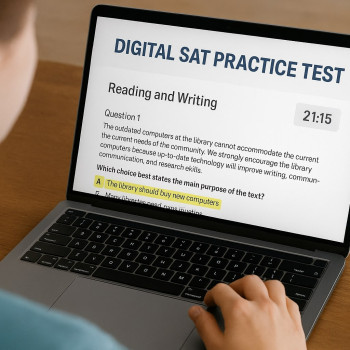Why this matters: SAT and the University of Melbourne
If you’re a student (or a parent of one) aiming to study at the University of Melbourne, you’ve likely heard conflicting advice about whether to take the SAT and what scores to aim for. The truth is practical and manageable: while Australian universities traditionally base admission on local credentials, many international applicants—especially from the United States, Canada, and countries that use U.S.-style testing—use SAT scores as part of their application. Understanding how the University of Melbourne views SAT/standardized test scores can help you craft the strongest application possible.

Does the University of Melbourne accept the SAT?
Short answer: yes—many international applicants can submit SAT scores as part of a broader assessment of academic readiness. The University of Melbourne evaluates international applications holistically, and standardized test results (when provided) may help admissions officers compare applicants coming from different educational systems.
What’s important to remember is that SAT submission policies can vary by faculty, course, and applicant background. Some programs focus more heavily on prior school results (like A-levels, the International Baccalaureate, or local equivalents), while others may consider SATs as supplementary evidence of readiness, particularly for competitive streams.
How admissions teams use SAT scores
- Contextual comparison: SAT scores give a common measure that helps compare students from diverse educational systems.
- Supplement to grades: For applicants from systems the university finds hard to benchmark, SATs can support or strengthen an application.
- Scholarship consideration: Strong standardized scores can sometimes support scholarship applications or meet eligibility for merit-based awards (where applicable).
What SAT score should you aim for?
There’s no single magic number that guarantees admission; the right target depends on the program’s competitiveness. For high-demand degrees—like Commerce, Engineering, and certain Science or Biomedical programs—you’ll want to be in the upper percentiles. For an effective planning rule of thumb:
- Aiming for a composite Digital SAT score in the top 10–15% of test-takers will make your application more competitive for selective courses.
- For moderately selective programs, a score around the median national percentile may be adequate if your school results are strong.
- Remember: the University of Melbourne places considerable weight on your school qualifications; strong grades plus a solid SAT score is ideal.
Suggested score ranges (practical targets)
| Program Competitiveness | Practical SAT Target (Digital SAT composite) | Why this target? |
|---|---|---|
| Highly competitive (e.g., Medicine pathway, top Engineering streams) | 1450–1600 | Stronger differentiation helps when many applicants have excellent school marks. |
| Selective (Commerce, Computer Science, Natural Sciences) | 1350–1490 | Balances excellent school results with evidence of standardized readiness. |
| Moderate competitiveness (Humanities, Social Sciences for some streams) | 1200–1350 | Solid supplemental score that pairs well with strong school transcripts. |
These ranges are not ironclad rules. Admissions decisions consider multiple factors: your course prerequisites, grade trends, personal statement, and sometimes interviews or additional tests. Treat SAT scores as a way to strengthen your case rather than a single determining factor.
When to take the Digital SAT for a University of Melbourne application
Timing matters. International applications to Australian universities often follow the Southern Hemisphere academic calendar, but deadlines vary by intake (February/March for Semester 1 and July for Semester 2). Plan so your scores are available before the application deadline for your intended intake.
- Take the Digital SAT at least 6–8 weeks before the application deadline to allow for score reporting and any unexpected delays.
- If you want to retake the test to improve your score, give yourself multiple months between attempts to meaningfully improve through study.
- Remember that some admissions rounds and scholarship deadlines have earlier cutoffs—check your chosen program’s timeline and aim to have final scores ready well in advance.
Practical timeline example
If you plan to start studies in February (usual start of the academic year):
- Take SAT by August–September the previous year to have results in time for November/December application windows.
- If unsatisfied with results, use October–November to study and retake in November–December, still allowing time for any late-round offers or scholarship applications.
Digital SAT vs. traditional tests & other evidence
The Digital SAT is shorter and adaptive; it’s the modern path for students used to online learning and practice. For international applicants, the advantage of submitting a Digital SAT score is that it’s readily interpretable alongside global credentials.
That said, the University of Melbourne may also accept other standardized evidence depending on your background: IB scores, A-levels, local national exams, or tertiary preparation results. If your local qualifications are strong and directly comparable, you may not need an SAT. But when in doubt, a solid SAT score provides flexibility and common ground for admissions reviewers.
Admissions components you should not overlook
SAT scores are valuable, but they’re one part of a more complete application. For international applicants targeting the University of Melbourne, prioritize:
- Consistently strong school grades with clear evidence of rigor in relevant subjects.
- Course prerequisites met (e.g., mathematics or sciences for STEM courses).
- Personal statement or statement of purpose that tells a concise, authentic story.
- Supplementary materials where required (e.g., portfolios for design subjects, supplementary forms for scholarships or special entry schemes).
- English language proficiency evidence if English isn’t your primary language (e.g., IELTS, TOEFL), unless explicitly waived.
Tips to make your SAT score truly count in your application
Here are practical, admissions-focused tips to make the most of your SAT effort.
1. Use the SAT to fill gaps in your application
If your school system is unfamiliar to admissions staff or you have a non-standard transcript, a strong SAT score offers a reliable benchmark. Think of it as a translator of academic potential.
2. Align your test preparation with course demands
If you’re applying for an Engineering major, prioritize quantitative strength on the SAT. For Commerce, logical reasoning and evidence-based reading matter. While the SAT is general, emphasizing sections relevant to your intended field strengthens your overall profile.
3. Prioritize score consistency over single-section excellence
Wide disparities between sections can raise questions. Aim for balanced performance—this signals readiness across the kinds of academic tasks you’ll meet at university.
4. Submit optional subject or supplementary evidence thoughtfully
If you have exceptional achievements—research projects, advanced math competitions, or published work—include them where the application allows. They complement SAT performance and show initiative.
How to prepare: realistic study plan and resources
Preparation is both a craft and an experiment: you try different approaches, measure what works, and iterate. Here’s a practical plan you can adapt.
- Initial diagnostic (week 1): Take an official practice Digital SAT to identify strengths and weaknesses.
- Targeted practice (weeks 2–8): Build a weekly schedule focusing on weakest areas, with 3–5 practice sets each week plus skill drills.
- Full-length simulations (weeks 9–12): Take timed full tests once per week to build stamina and timing.
- Final polishing (last 4 weeks): Light practice, error review, and test-day logistics—rest, timing, and materials.
Study materials and habits
- Use official practice resources to get exam-realistic questions.
- Review mistakes deeply—understand why you got a question wrong rather than simply repeating problems.
- Work on reading speed and data interpretation; these are high-leverage skills across tests and university work.
- Practice under realistic, timed conditions to reduce test-day surprises.
How personalized tutoring can accelerate progress
Many students make the biggest leaps when they pair disciplined self-study with targeted, individualized coaching. A personalized tutor can spot blind spots, provide accountability, and deliver techniques that fit your learning style. For example, Sparkl’s personalized tutoring is built around 1-on-1 guidance, tailored study plans, expert tutors, and AI-driven insights—elements that help students focus study time efficiently and measurably improve scores.
When to consider a tutor
- If your diagnostic shows uneven performance that self-study hasn’t fixed.
- If you’re juggling busy school or extracurricular commitments and need efficient, high-impact lessons.
- If you want tailored strategies for time management, question selection, and reducing careless errors.
Common misconceptions—busted
Let’s clear a few myths that cause unnecessary stress.
- Myth: “You must have a perfect SAT to get into the University of Melbourne.” Reality: A strong application balances grades, course prerequisites, and test scores; perfection is not required.
- Myth: “SAT is irrelevant for Australian universities.” Reality: For international applicants, a good SAT can be a helpful comparative tool.
- Myth: “One test score defines me.” Reality: Admissions look at trends, context, and the whole applicant profile.
Sample application checklist for SAT-submitters
Use this checklist to stay organized as you apply:
- Confirm whether your chosen course accepts or recommends SAT scores.
- Register for the Digital SAT and plan test dates with score-reporting time in mind.
- Complete all course prerequisite coursework and document grades clearly.
- Prepare English language evidence if required (IELTS/TOEFL) or confirm waivers.
- Write and polish your personal statement; ask teachers for recommendations where relevant.
- Organize supplementary documents (transcripts, portfolios, certificates).
- Consider targeted tutoring or a structured program if you want measurable score improvement.
Example timeline: U.S.-style student aiming for Feb intake
| Month (Year before start) | Action |
|---|---|
| June–August | Research University of Melbourne course pages, confirm SAT policy for your faculty, and take a diagnostic SAT. |
| September–October | Begin targeted study or tutoring; take a full-length Digital SAT in early autumn. |
| November | Review results, decide whether to retake; gather transcripts and start drafting personal statement. |
| December–January | Finalize application materials and confirm score reports are sent in time; submit application well before deadline. |
Student stories: turning an SAT into an advantage
Imagine Maya, a student from Singapore who had outstanding school results but whose curriculum was unfamiliar to the admissions readers. She took the Digital SAT, scoring steadily across sections. That score helped admissions contextualize her GPA and led to an offer from a competitive Commerce stream. Or consider Liam, a U.S. student whose school grades dipped one year due to personal issues; his strong SAT confirmed his academic potential and reassured selectors that his dip was temporary. These are realistic scenarios: a well-placed SAT score helps tell a fuller story.

Final thoughts: build a cohesive application
For students aiming at the University of Melbourne, treat the SAT as a strategic component—especially if you come from an international system or want to strengthen your comparability. Your best approach is holistic: pair strong school results and prerequisites with a well-timed SAT, a compelling personal statement, and organized supplementary materials.
If you’re wondering where to begin or how to turn limited study time into score improvements, consider a tailored approach. Personalized tutoring—like the 1-on-1 guidance and bespoke study plans offered by Sparkl—can accelerate progress, sharpen test strategies, and help you submit a more confident application.
Next steps checklist (quick)
- Confirm your program’s admissions page and deadlines.
- Take a diagnostic Digital SAT and set a realistic score target.
- Plan test dates so scores arrive before deadlines.
- Decide if targeted tutoring fits your timeline and budget.
- Prepare application materials early and seek feedback on statements and supporting documents.
Wrapping up — confidence with clarity
Applying internationally can feel complicated, but clarity and planning remove most of the mystery. Use the SAT to strengthen your application when it makes sense, aim for balanced scores, and give yourself the time to prepare sensibly. With consistent effort, thoughtful strategy, and targeted support where needed, you’ll create an application that showcases your academic readiness and personal story—exactly what top universities like the University of Melbourne want to see.
Good luck—prepare calmly, aim confidently, and remember that thoughtful preparation and the right support can turn a single test into a meaningful advantage in your application journey.












No Comments
Leave a comment Cancel